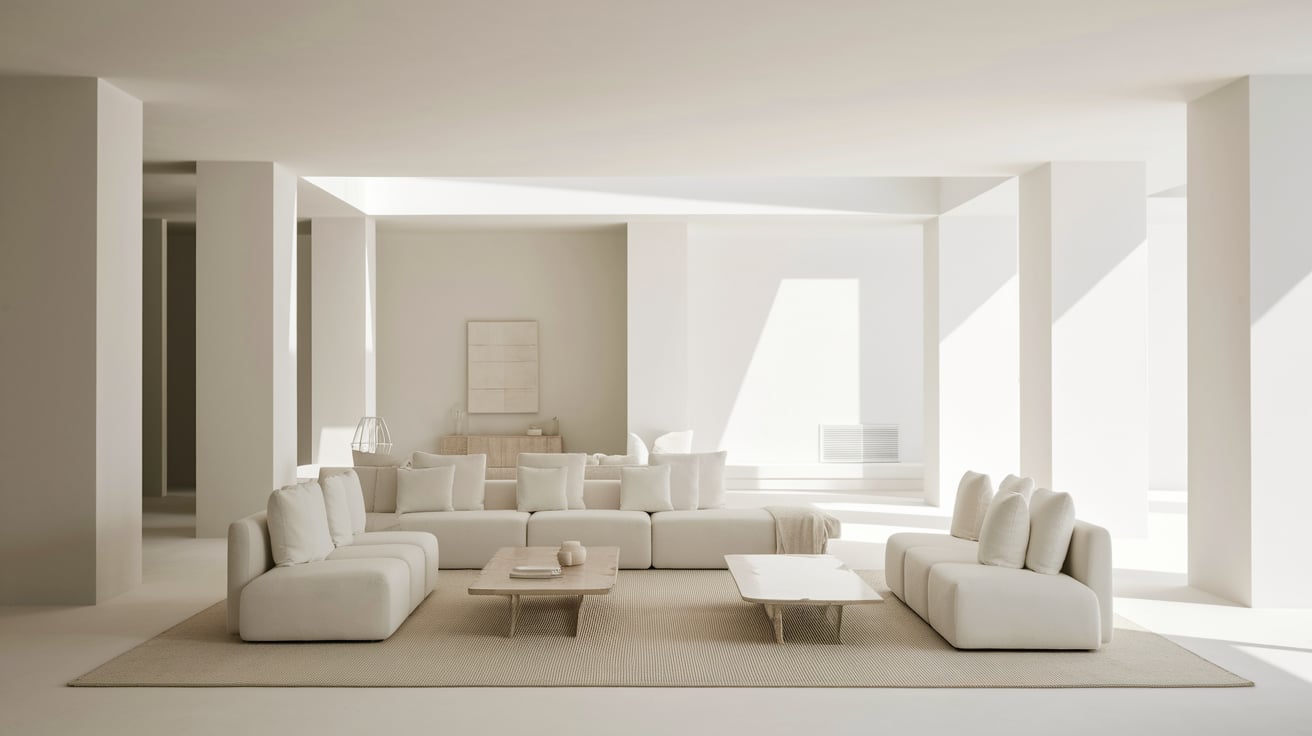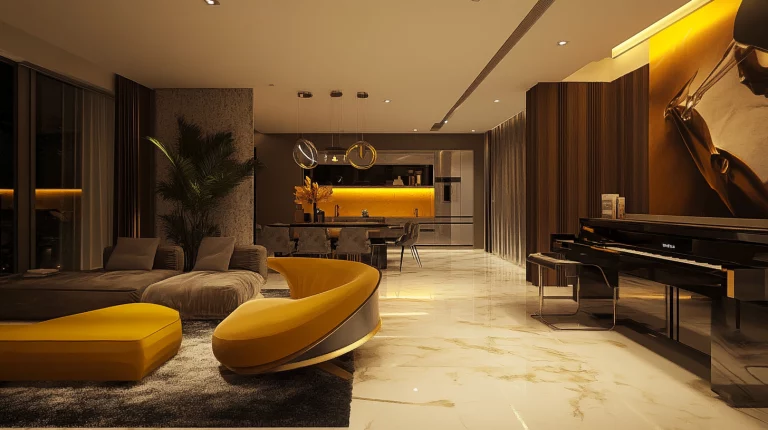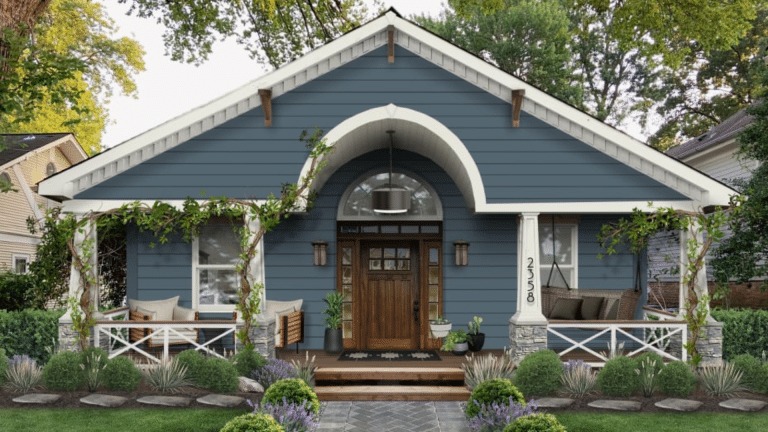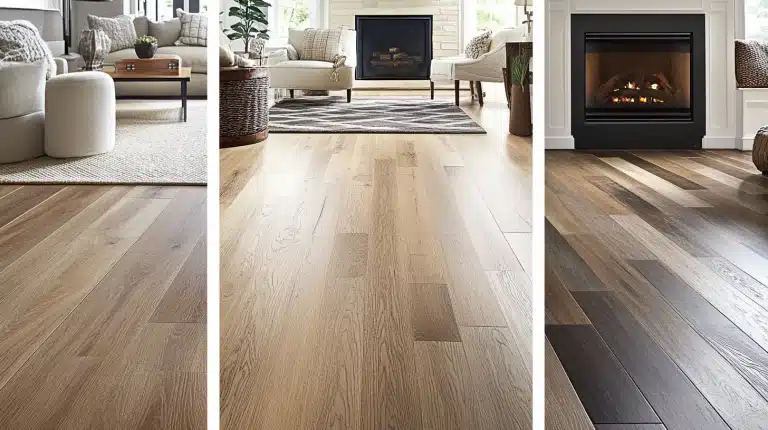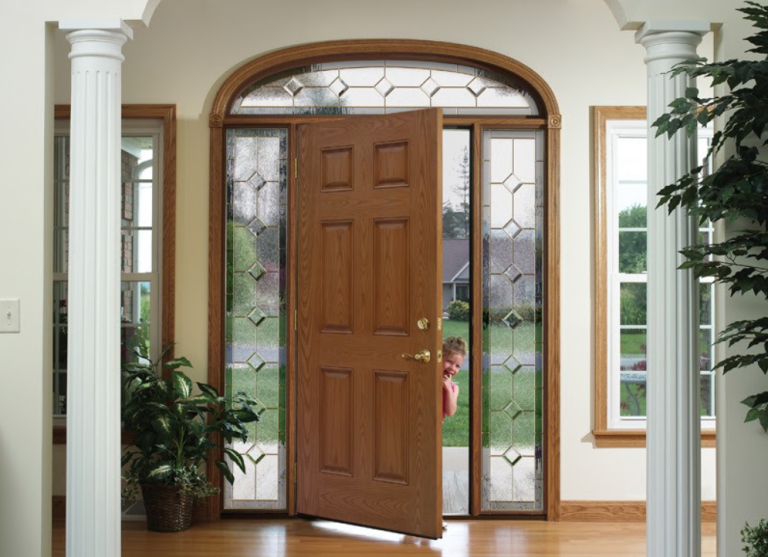What Defines Minimalist Contemporary Design?
Clean lines, purposeful spaces, and functional beauty define today’s homes.
As our lives grow increasingly complex, I’ve noticed more homeowners seeking refuge in the calm simplicity of minimalist contemporary design. It’s not just about having less; it’s about creating room to breathe.
I promise that adopting a minimalist contemporary style doesn’t mean living in a cold, sterile environment. Instead, it’s about curating a space that works for you while eliminating the unnecessary.
This guide will explain the essential elements of minimalist contemporary design, show you how to blend functionality with beauty, and help you change your home into a peaceful retreat where every item has purpose and meaning.
Understanding Minimalist Contemporary Design
Minimalist contemporary design embodies a modern approach to interior styling, prioritizing simplicity, functionality, and intentional living. This design philosophy strips away excess to reveal the essential beauty of space, materials, and form.
What defines this style?
Clean geometric lines replace ornate details, while neutral color schemes create visual harmony. Think white walls paired with warm wood tones, or soft grays complemented by black accents. Every element serves a purpose—no decorative clutter allowed.
Open floor plans that maximize natural light flow, high-quality materials like natural stone and solid wood, and furniture with sleek silhouettes. Storage solutions remain hidden, maintaining uncluttered surfaces throughout.
Unlike traditional minimalism, this style embraces modern technology and materials. Smart home features integrate seamlessly, while contemporary art pieces become focal points rather than afterthoughts.
Why choose this approach?
- Reduces visual stress and mental clutter
- Simplifies daily cleaning and maintenance routines
- Creates flexible environments that adapt to changing needs
- Achieves a sophisticated yet livable home atmosphere
- Proves that fewer design elements create more impact
- Promotes calm, peaceful living environments
- Eliminates unnecessary distractions from daily life
Core Elements of Minimalist Contemporary Design
1. Welcome the Beauty of Clean Lines
Clean lines are the backbone of minimalist contemporary design. Focus on furniture with straight edges and simple silhouettes that create a sense of order.
For example, a platform bed frame without a headboard maintains that uncluttered horizontal line that makes rooms feel larger and more peaceful.
2. Choose a Calming Color Palette
The power of neutrals can’t be overstated in minimalist design. Stick to whites, beiges, grays, and blacks as the foundation, then add subtle colors carefully if needed.
For example, kitchens with white cabinets, light gray countertops, and natural wood accents create a timeless look that won’t feel dated in the years to come. This simplified palette makes spaces feel cohesive and calm.
3. Create Breathing Room
Minimalist spaces need room to breathe. Ensure that each item in the home has a purpose and a designated place. In entryways, instead of decorative console tables crowded with knick-knacks, consider simpler solutions.
For example, install a simple floating shelf for keys and a single hook for bags. The remaining space stays empty, creating that peaceful feeling when walking through the door after a busy day.
Key Features to Incorporate
Create a spacious and inviting home by embracing natural light, incorporating subtle color accents, selecting high-quality furniture, and incorporating intentional decor that tells a meaningful story.
1. Let Light Flow Through Open Spaces
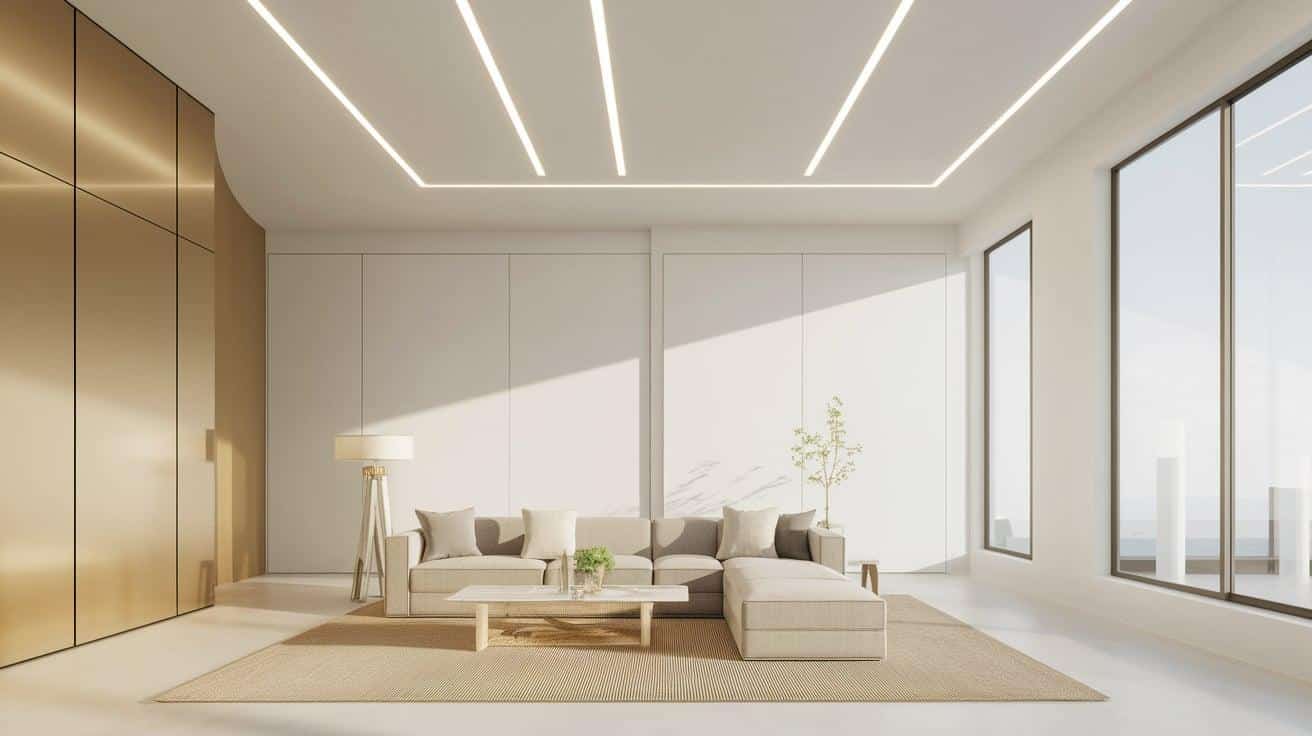
Removing unnecessary walls creates a sense of freedom in homes. Kitchens that open to dining areas allow conversations to flow while cooking is in progress.
Natural light is crucial, too. Replace heavy drapes with simple roller blinds that disappear when open.
Consider leaving windows that face the sunrise completely bare, letting morning light provide a natural wake-up call instead of relying on alarms.
2. Play With Subtle Color Accents
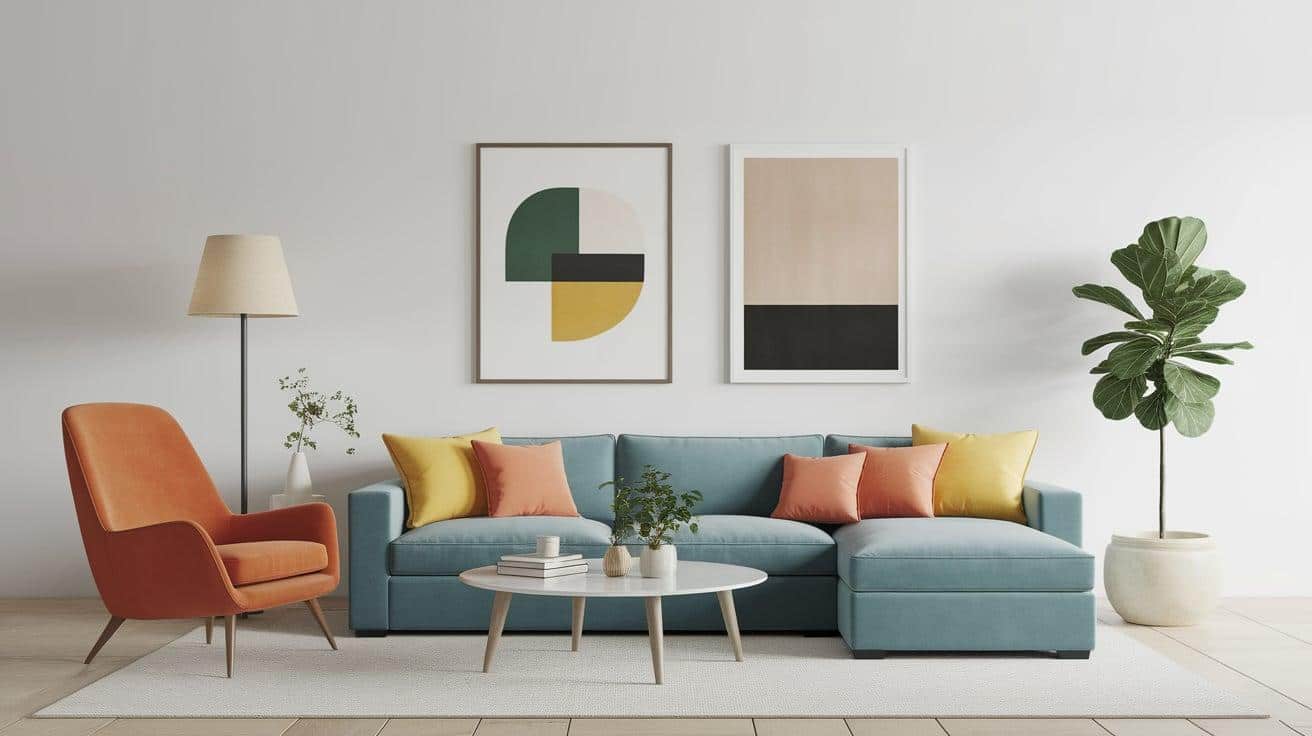
While keeping most surfaces neutral, small pops of color bring rooms to life. In mostly white bedrooms, a dusty blue throw blanket adds interest without disrupting the calm.
Living rooms can feature two deep green pillows that draw the eye without overwhelming the space.
These thoughtful touches keep minimalist design from feeling cold or boring.
3. Choose Quality Furniture That Speaks Softly
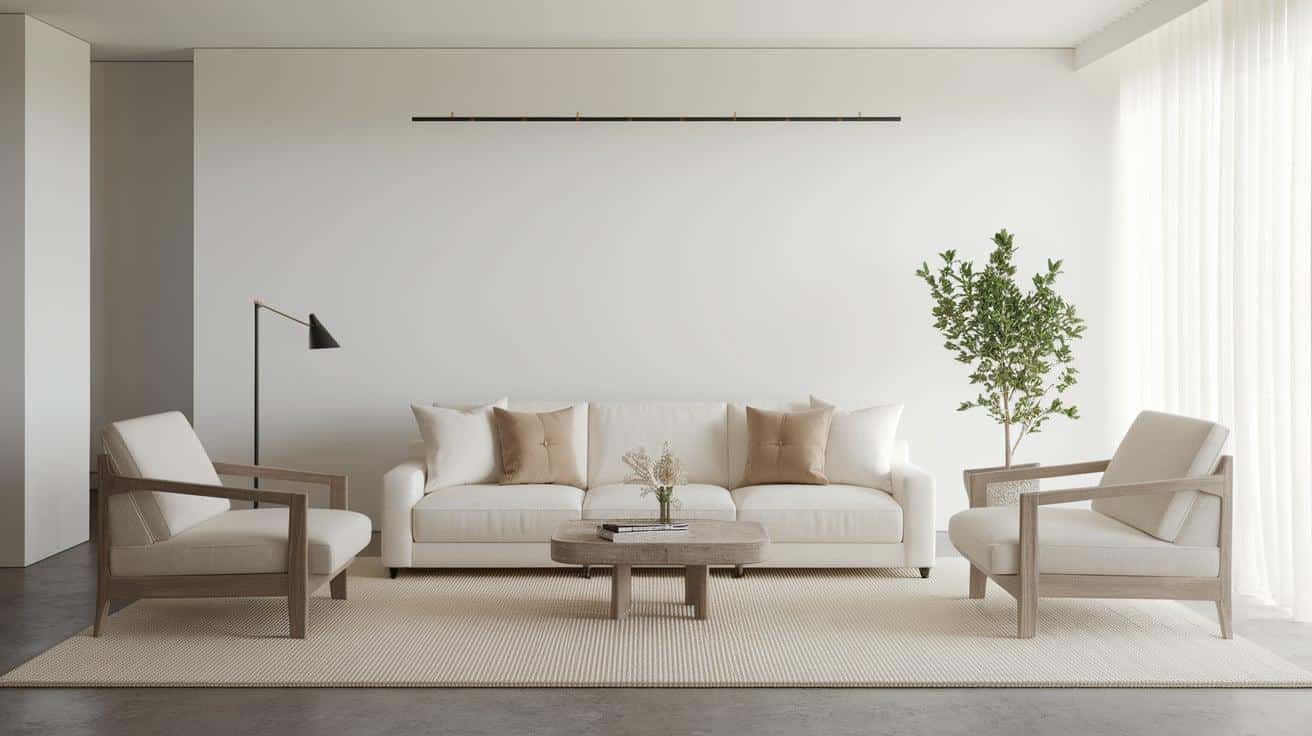
Focus on fewer, better pieces rather than filling homes with furniture. Dining areas work well with a simple oak table with clean lines and four matching chairs, nothing extra.
In living rooms, opt for well-made sofas with timeless designs instead of purchasing cheaper ones that will need replacement soon. Quality basics outlast trends and actually save money over time.
4. Decorate With Intention, Not Abundance
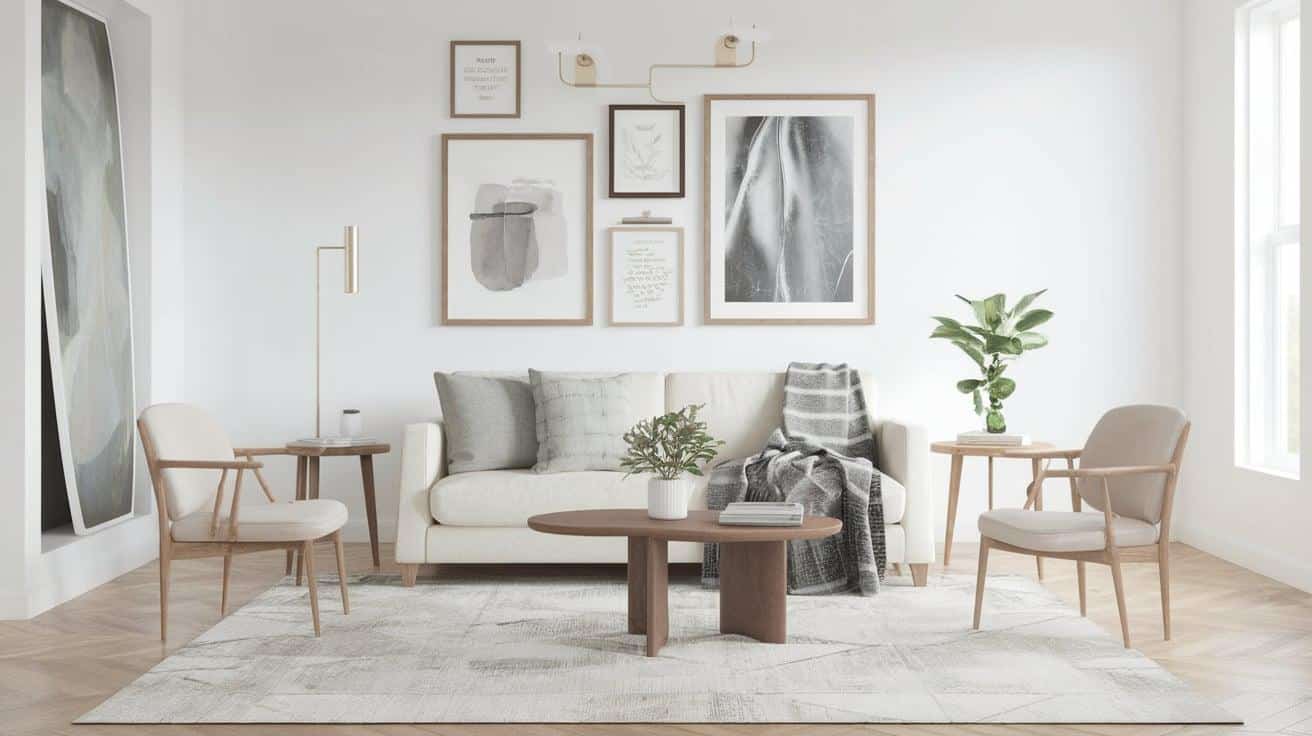
Display only items that truly matter. On mantels, a single piece of driftwood from a memorable beach trip can make a statement.
Bookshelves should hold books that are genuinely loved, not ones that look good.
When guests visit, they notice these few meaningful pieces more than they would in cluttered spaces, which often leads to great conversations about the stories behind them.
Pros and Cons of Minimalist Contemporary Design
Minimalist contemporary design offers clarity and ease, but can feel sterile and challenging to maintain without personal touches and warmth.
| Pros | Cons |
|---|---|
| Reduces visual clutter, leading to mental relaxation. | Can feel cold or sterile without added textures or warmth. |
| Fewer items to clean, making maintenance quicker. | Due to its pristine look, guests may feel hesitant to touch or use the space. |
| The simplicity allows high-quality items to stand out. | Small amounts of clutter can disrupt the minimalist aesthetic and require regular tidying. |
| Minimalist spaces can be easily rearranged for various functions. | High-quality, minimalist furniture often comes with a higher price tag. |
| Fewer choices lead to a clearer, less stressful daily routine. | Finding places for essential items can be difficult without compromising the clean look. |
| Focusing on quality over quantity encourages long-term sustainability. | Without personal touches, minimalist spaces can feel too neutral or lacking in character. |
Best Rooms for Minimalist Contemporary Design
1. Living Room Serenity
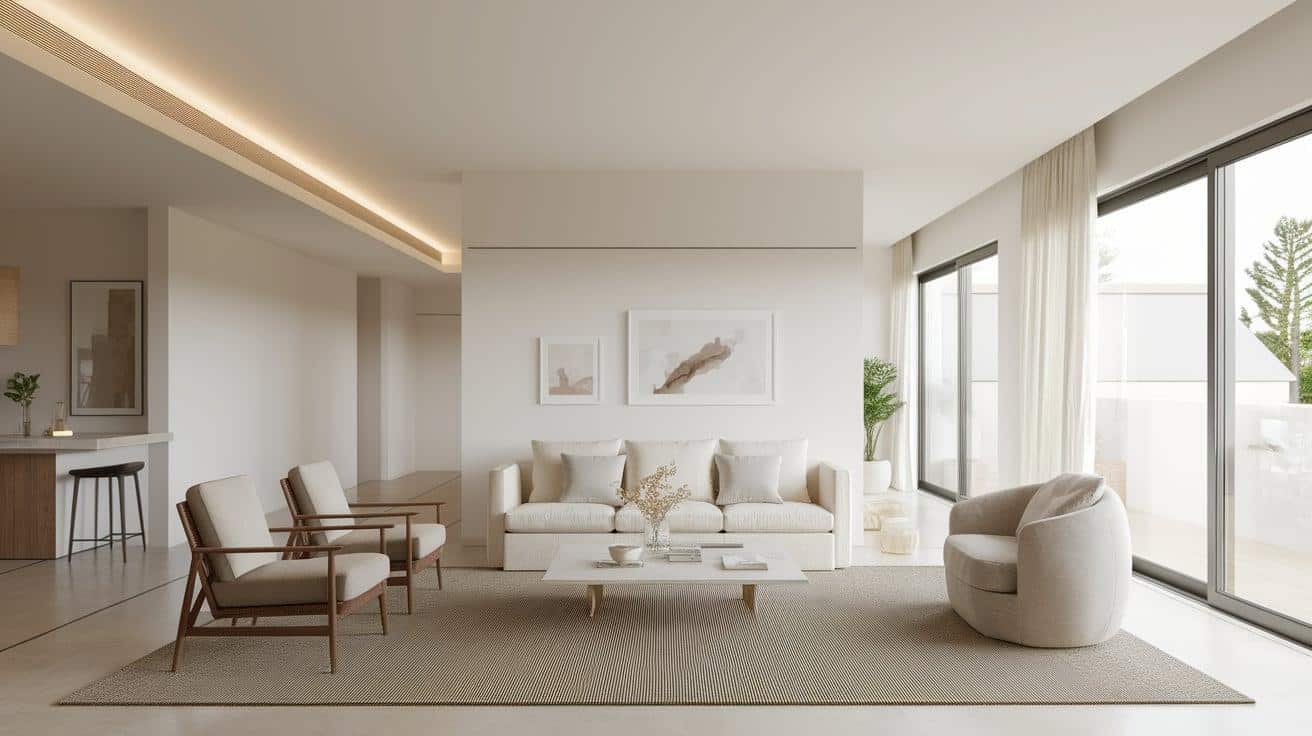
- The living room is perfect for minimalist design because it’s where people relax after a busy day. Please keep it simple with a comfortable gray sofa, a natural wood coffee table, and a soft area rug.
- Instead of filling every wall with art, choose one large landscape photograph that brings joy. Mount the TV flat against the wall without visible cords, and add floor cushions instead of extra chairs for when friends visit.
2. Kitchen and Dining Simplicity
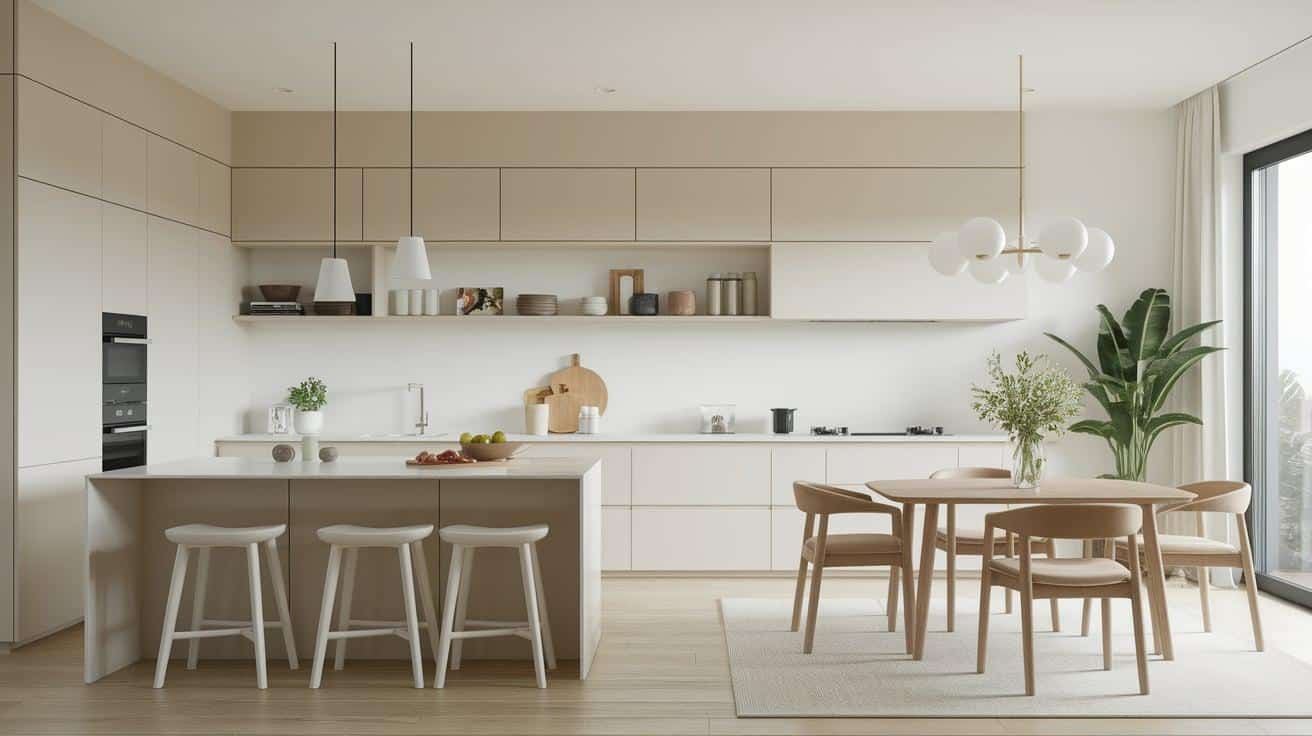
- Kitchen transformations can make the biggest difference in how people feel at home. Remove upper cabinets on one wall and replace them with open shelving that holds only everyday dishes.
- Keep counters clear except for a coffee maker and a wooden cutting board. In dining areas, a simple table with four chairs is all that’s needed; skip the sideboard or hutch.
3. Bedroom Retreat
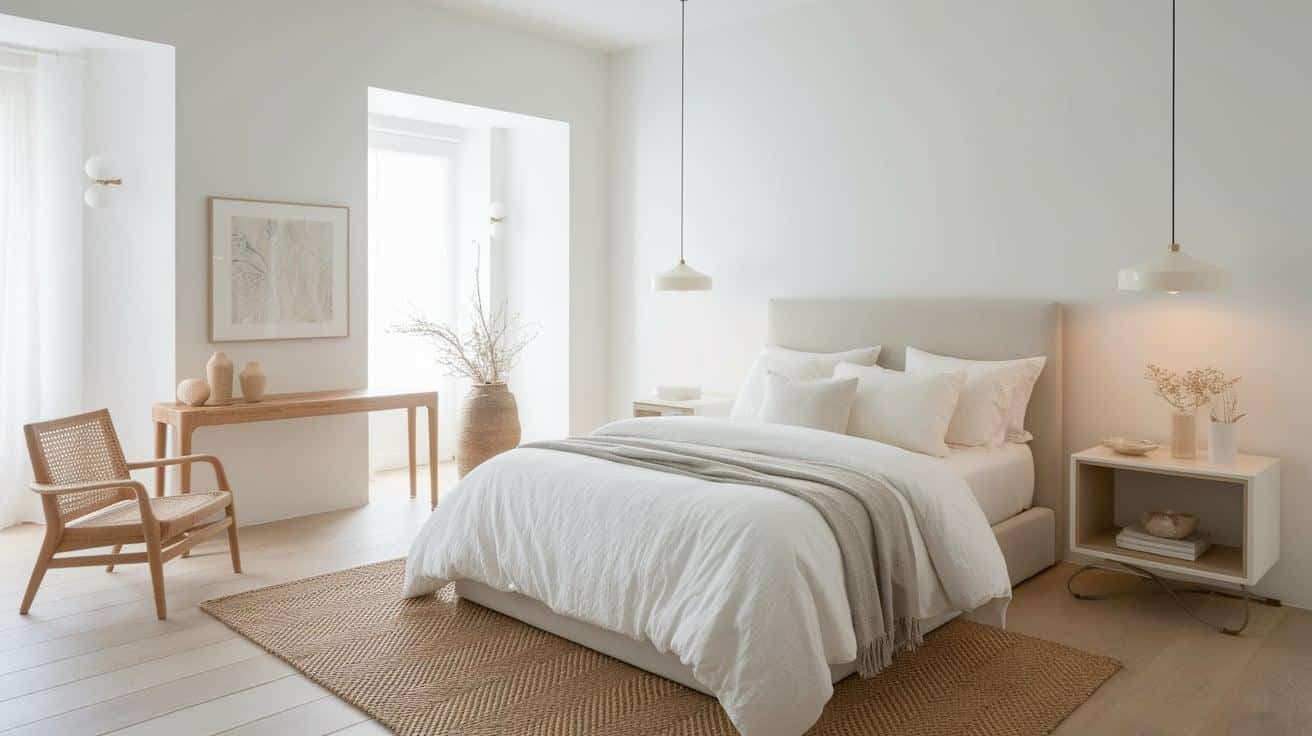
- The bedroom should be the most calming space in any home. Choose a low platform bed, two small nightstands, and nothing else: no TV, desk, exercise equipment, just a dedicated space for rest.
- Keep the bedding white with soft gray accents, and maintain clear nightstands, except for a small lamp and a book. This simplified approach to the bedroom can dramatically improve sleep quality and morning mood.
Conclusion
Minimalist contemporary design isn’t about sacrifice; it’s about intentional living. By focusing on clean lines, neutral palettes, and quality over quantity, you create spaces that support both relaxation and productivity.
Your home becomes a reflection of what truly matters to you.
The beauty lies in simplicity: fewer items to maintain, clearer surfaces to admire, and rooms that adapt to your changing needs. Each carefully chosen piece tells a story worth preserving.
Begin with one room and gradually expand your approach throughout your home. Remember, this style works best when it serves your lifestyle, not the other way around.
Browse our curated collection of minimalist furniture and decor to find pieces that perfectly complement your new design vision. What room in your home would benefit most from a minimalist makeover?
Frequently Asked Questions
1. What is the Difference Between Minimalist and Modern Minimalist?
A minimalist focuses purely on simplicity, adhering to the principle that “less is more.” A modern minimalist adds contemporary materials and technology while maintaining an uncluttered feel.
2. Do Gen Z Like Minimalism?
Many Gen Zers do like minimalism, but often with personalized twists. They tend to blend minimalist principles with self-expression, sustainability, rather than adhering to strict traditional minimalism.
3. When Did Minimalism Become Trendy?
Minimalism gained popularity in the late 2000s and early 2010s, thanks to design blogs, Marie Kondo’s decluttering methods, and the rise of the tiny house movement.

